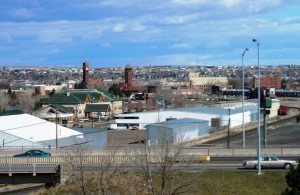Almost every day I hear another tragic story of how untreated mental health issues are profoundly impacting communities across the country. It seems like every time I turn on the news there is another story about a school shooting, an incident of domestic abuse or violence, or an LGBTQ youth being bullied to the point of suicide.
It’s upsetting, it’s frustrating, and ultimately it’s a story of how people continue to fall between the cracks in the system, as the mental health needs of our community are ignored or remain invisible. For decades we have struggled to garner the public and political will as well as find the necessary resources to fully support the growing and complex mental health issues our country faces. This inaction has led to severe gaps in services and support for those who need it most, including people who are experiencing homelessness.
As I travel around Montana, and most recently to Great Falls, I continue to have opportunities to learn more about the overlapping issues of homelessness and mental health. When I was in Great Falls I met with the Center for Mental Health—solidifying for me once again why our work is so important and why it’s necessary to think about homelessness and mental health as inter-connecting issues that need to be addressed simultaneously.
For LGBTQ homeless youth—many of whom have been forced out of their homes by parents because of their sexual orientation or gender identity—being out on the streets can exacerbate feelings of trauma and isolation that youth are already grappling with. As the stories of Chris and Joshua highlight, LGBTQ youth are often in an extremely vulnerable place after they become homeless.
This makes homeless LGBTQ youth even more susceptible to “depression, loneliness, and psychosomatic illness, withdrawn behavior, social problems, and delinquency,” according to a report by the National Gay and Lesbian Task Force. Combined with the social stigma and prejudice that LGBTQ people face on a daily basis—experiences of violence, discrimination, and harassment—this creates a unique and challenging set of issues for homeless LGBTQ youth.
As a result, approximately 65% of homeless LGBTQ youth face mental health challenges. Furthermore, homeless youth who identify as lesbian, gay, or bisexual (LGB) are at a 62% risk of attempting suicide versus a 29% risk for their homeless peers who are heterosexual (National Alliance to End Homelessness).
While talking with staff at the Center for Mental Health, it was clear that homeless LGBTQ youth in Great Falls face a number of different obstacles. As a fairly rural community in the middle of an expansive state, it can be hard for youth to know where to go to get the necessary support. Unless LGBTQ youth hear about resources from a friend or supportive adult, many may not know what’s available to them.
That is why I was so thrilled to hear about the Center for Mental Health’s Youth Crisis Diversion Program, which has been in operation since January of 2014. It has staff working on the crisis line twenty-four hours a day, ready to speak with youth in any type of crisis. Staff members are trained to work with anyone who calls to help youth self-identify their crisis. They then work with a cohort of community partners and agencies to support the unique needs of each client, keeping in mind any additional factors that might impact the individual’s current situation.
One of the persistent challenges facing youth that call the crisis line is the ability to find stable and appropriate housing. The Center for Mental Health is making strides to remove that barrier by opening a new crisis home. The new facility will allow youth between the ages of 8-18 to stay for up to 21 days, while working with staff on a transition plan. Transition plans will be tailored to each individual, ensuring that LGBTQ youth receive culturally competent resources and services, and also providing a safe space for youth to be open and authentic about how they are.
The Youth Crisis Diversion Program has served just over 100 youth so far this year—I look forward to seeing the progress they make as their new crisis home opens and expands their capacity to serve our community even more.
I was struck as I was leaving Great Falls about how it must feel when a young person first experiences homelessness in this part of the country. Driving along the long, winding roads leaving the city, I was filled with hope that resources like the Center for Mental Health will allow youth to find a safe space to land—providing them the support and compassion they need to endure whatever life throws at them. It is more important than ever that our youth know that they are not alone.
Kim Leighton is Pride Foundation’s regional development organizer in Montana. Email Kim.
